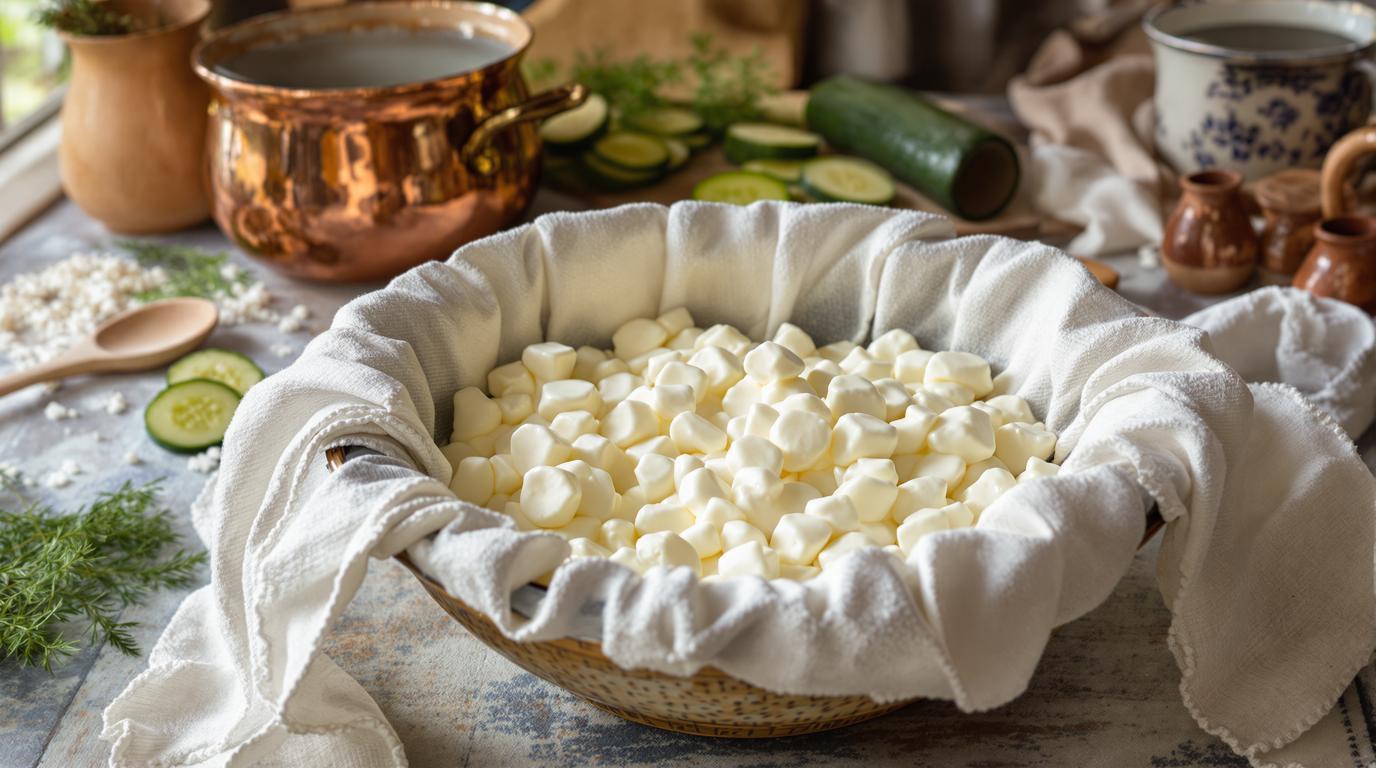There’s something almost magical about making cottage cheese from scratch. The first time my grandmother showed me how to transform a simple gallon of milk into those tender, pillowy curds, I was mesmerized by the alchemy of it all. “This is how we’ve made it for generations,” she’d tell me, her hands working the cheesecloth with practiced precision. The beauty of grandmother-style cottage cheese isn’t just in its creamy texture or subtle tang—it’s in how it connects us to culinary traditions that stretch back centuries, long before industrial food production changed our relationship with dairy.
The Humble Origins of Cottage Cheese 🏡
Cottage cheese earned its name from its humble beginnings—it was literally made in cottages, where homesteaders transformed surplus milk into a protein-rich food that wouldn’t spoil quickly. Dating back to medieval Europe, this practical preservation technique created a versatile cheese that became a staple in farmhouse kitchens across continents. What’s remarkable is how little the traditional method has changed over centuries—a testament to the wisdom of our culinary ancestors.
Two Traditional Methods 🧀
There are two authentic approaches to homemade cottage cheese, each with its distinct character. The first—and most traditional—relies on natural fermentation, while the second uses rennet for more consistent results.
Method 1: The Natural Fermentation Approach
Ingredients:
• ½ gallon (2 liters) raw milk or pasteurized whole milk
• ¼ teaspoon salt (or to taste)
• Optional: 3-4 tablespoons heavy cream or sour cream
Instructions:
- Pour milk into a large glass container with a loose-fitting lid. Place in a warm spot in your kitchen (70-75°F/21-24°C) for 2-5 days, until the milk separates into curds and whey.
- Line a colander with two layers of cheesecloth and place over a large bowl.
- Gently pour the separated milk into the cheesecloth. The whey will drain through while the curds remain.
- Allow to drain for 4-6 hours at room temperature.
- Transfer curds to a bowl, add salt to taste, and fold in cream or sour cream if desired.
Method 2: The Rennet Method (Quicker Option)
Ingredients:
• ½ gallon (2 liters) whole milk
• ⅛ teaspoon liquid rennet dissolved in 2 tablespoons cool water
• ½ teaspoon salt
• Optional: 1 tablespoon heavy cream and 3 tablespoons sour cream
Instructions:
- Warm milk to 80°F (27°C) in a large pot.
- Stir in the dissolved rennet with a few gentle strokes.
- Cover and let sit undisturbed for 2 hours until firmly set.
- Cut the curds into small pieces with a whisk, then let rest for 10 minutes.
- Slowly heat to 100-110°F (38-43°C), stirring occasionally, until curds hold their shape when gently squeezed.
- Drain through cheesecloth for 20-30 minutes.
- Mix in salt and optional cream components.
Chef’s Note: The temperature is crucial when working with rennet. Too hot, and you’ll get tough, rubbery curds; too cool, and they won’t set properly. I recommend using a reliable kitchen thermometer for precision. The natural fermentation method is more forgiving but requires patience—a beautiful reminder that sometimes the best flavors can’t be rushed.
Serving Suggestions 🍽️
Authentic cottage cheese is remarkably versatile. For a traditional Eastern European breakfast, serve it with sliced cucumbers, tomatoes, and a sprinkle of fresh dill. Or take inspiration from my grandmother’s summer table and pair it with roast chicken and a slice of rye bread. For something sweet, top with honey and seasonal berries.
For modern applications, transform your rainbow poke bowl with a dollop of cottage cheese instead of avocado, or use it in place of ricotta in lasagna for added protein. It’s also divine alongside homemade chocolate chip cookies for a sweet-savory contrast.
When I’m feeling adventurous, I’ll use my cottage cheese to create a Middle Eastern-inspired dish by incorporating it into a lentil feast or serving it alongside crispy Japanese karaage with a drizzle of honey.
As you spoon your first batch of homemade cottage cheese onto a plate, remember you’re participating in one of cooking’s oldest traditions. This humble cheese has nourished generations with its simple, honest flavors—a reminder that sometimes the most profound culinary experiences come from the simplest techniques passed down through loving hands.
